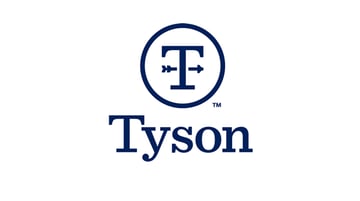For many businesses in the food industry, the need for a robust, centralized supplier management program was only reinforced by the COVID-19 pandemic. The prolonged disruption caused by the pandemic highlighted the distributed, complex, and sprawling nature of global food production operations as differing restrictions across countries – and even within them – led to shortages and delays up and downstream for nearly all stakeholders.
While there is no one-stop, magic solution to address this disruption, businesses with a strong centralized supplier management program have been able to more nimbly manage the ongoing challenges presented by the pandemic. Full supply chain visibility remains the top strategic objective for supply chain leaders and a centralized supplier management program is an essential step in realizing that goal.
Building Your Supplier Management Program
While many supply chain leaders agree that supplier management is a mission-critical activity, it often takes a backseat to more tactical efforts in procurement. In fact, an APQC report highlights that time for supplier management accounts for roughly 15 percent of labor allocation in procurement. Regardless of how much time your team is able to devote to it, a well-designed supplier management program backed by a robust supplier management solution will pay dividends well beyond the time and resources invested.
Building or enhancing your supplier management program should be a proactive exercise. After all, supplier management is, at its core, about relationship building. Don't wait for the first incident or disruption to be the catalyst to build your supplier management program. Use the process as an opportunity to form a true community of suppliers. In doing so, you'll ultimately enable a more collaborative and united network of supporters of your organization. With that mindset in practice, you're ready to start building your supplier management program.
 Step #1: Begin with the End Goal
Step #1: Begin with the End Goal
Each business must approach supplier management within the context of its own greater strategic business objectives. In defining the end state, you're able to adequately scope the initiative and reign expectations, demonstrate progress towards your goal, and more clearly communicate the larger vision to your leadership and organization at large.
 Step #2: Let Risk Management Guide Supplier Management
Step #2: Let Risk Management Guide Supplier Management
At its most basic, supplier management is a sibling of risk management and should be approached accordingly. The food landscape is diverse with suppliers of varying degrees of sophistication – be it from a process or technology standpoint. In standing up your supplier management program, look at your suppliers that may be high-risk.
While they may pose their own challenges – these suppliers will better inform how you can best onboard the rest of your suppliers and provide you with invaluable learnings as you go. With this approach, each supplier onboarded will ultimately inform the next, creating a chain of continuous improvement as you evolve. Keep adaptability and flexibility top of mind so you're able to quickly adjust your implementation and onboarding process as you go.
 Step #3: Don't Let Good Be the Enemy of Great
Step #3: Don't Let Good Be the Enemy of Great
In the aim of perfection, too many organizations allow extraneous, non-value-add activities and milestones to curtail the ultimate objective. Focus on the aspects of your supplier management program that will create the most value and expand from there. While this may take time, the realization of quick wins can help create momentum both with suppliers and your own team. Creating a pleasant and seamless experience for your suppliers will ensure a more sustainable future.
 Step #4: Measure and Adapt
Step #4: Measure and Adapt
In setting your expectations, be sure to create realistic and reasonable goals for your organization and your suppliers. Creating a streamlined supplier management program will take time, and it's critical to build a vision your stakeholders can work towards. It's also vital to meet your stakeholders where they are in this journey towards centralized supplier management. Keep the end-users in mind as you go and be prepared to adapt continuously.
Standing Up Your Supplier Management Program
When it comes to technology, supplier management solutions should enhance the evolution of your supplier management program with user experience, intuitiveness, and ease of mind built-in.
FoodLogiQ helps you manage critical supplier data so you get real-time visualization of your supply chain. With FoodLogiQ' Connect's Manage + Monitor dashboard, you can see which suppliers have expired documentation, failed audits, or the most quality incidents.
Tag(s):
Supplier Compliance
Other posts you might be interested in
View All Posts
Food Safety
10 min read
| March 29, 2023
Supplier Management Best Practices and Tips in the Modern Food Era
Read More
Supplier Compliance
6 min read
| October 11, 2016
Supplier Management Software: Ease FSMA Concerns & Centralize Supplier Info
Read More
Quality Management
5 min read
| August 23, 2018

